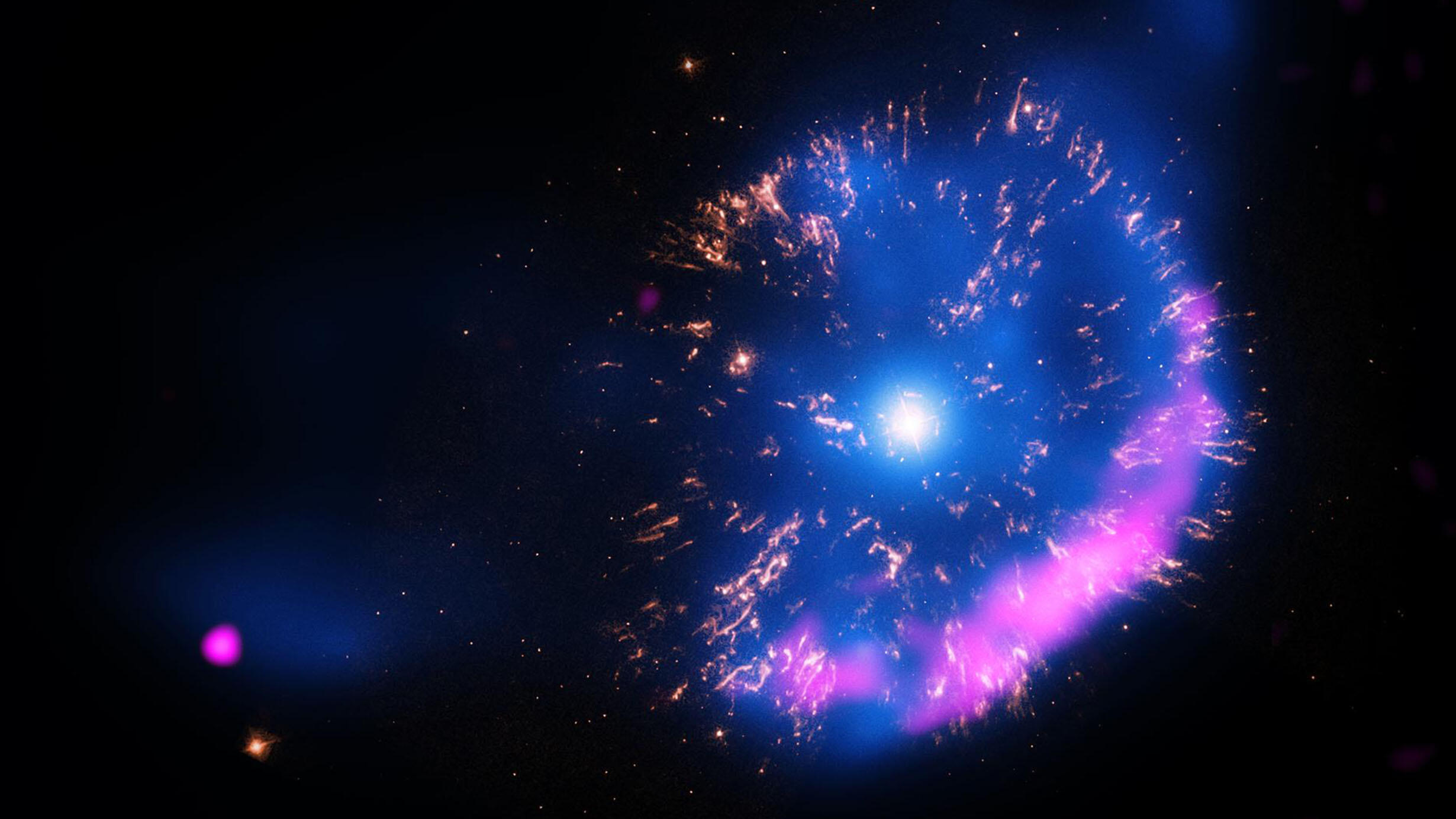 This image—which is a combination of a Hubble Space telescope image and a Chandra X-ray Observatory image—shows a nova shell, the material ejected from the nova seen a century later.
This image—which is a combination of a Hubble Space telescope image and a Chandra X-ray Observatory image—shows a nova shell, the material ejected from the nova seen a century later.Nearly 35 years ago, Museum curator Michael Shara made a prediction that became of one of his most cited—and most contested—studies to date: that colossal hydrogen bombs called novae go through a very long-term life cycle after erupting, fading to obscurity for hundreds of thousands of years and then building back up to become full-fledged novae once again.
Now, with computing power unheard of when Shara first proposed what is known as the “hibernation scenario,” he and colleagues are the first to fully model the work and incorporate the feedback factors now known to control these systems. The new study, published in the journal Nature Astronomy, supports the original prediction while illuminating new details.
“We’ve now quantified the suggestion from decades ago that most of these systems are deeply hibernating, waiting to wake up, and we haven’t yet identified them,” Shara said.
Novae, or cataclysmic binary systems, occur when a star like our Sun—a red dwarf—is cannibalized by a white dwarf, a dead star. The white dwarf builds up a critical layer of hydrogen that it steals from the red dwarf, and that hydrogen explodes as a gigantic bomb, producing a burst of light up to 1 million times brighter than the Sun.
Shara’s 1986 study proposed that, after an eruption, a nova enters a cycle and becomes “nova-like,” then a dwarf nova, and then, after a hibernation as a so-called detached binary, it returns to a dwarf nova, then nova-like, and finally a nova. This cycle repeats up to 100,000 times over billions of years. “In the same way that an egg, a caterpillar, a pupa, and a butterfly are all life stages of the same organism, these binaries are all the same objects seen at different phases of their lives,” Shara said.
For the new study, Shara and his colleagues at Ariel University and Tel-Aviv University in Israel built a set of simulations to follow thousands of novae eruptions and their effects on their red dwarf companions. They found that cataclysmic binaries do not simply alternate through each of the four states their whole lives.
Newborn binaries, considered as the first few percent of a system’s life, only alternate between nova and nova-like states. Then, for the next 10 percent of their lifetimes, the binaries alternate through three states: nova, nova-like, and dwarf nova. For the remaining nearly 90 percent of their lifetimes, they continuously cycle through all four states.
The study also showed that almost all of the novae we observe today occur near the beginning of a binary system’s life as opposed to the end.
“Statistically, that means that the systems we observe—the ones that are popping off all of the time—are the newborn ones,” Shara said. “And that’s just about 5 percent of the total binaries out there. The vast majority are in the detached state, and we’ve been ignoring them because they’re so faint and common. We know that they’re there. Now we just have to work hard to find them and connect them to novae.”